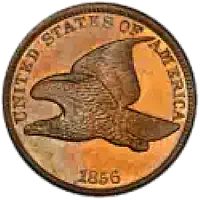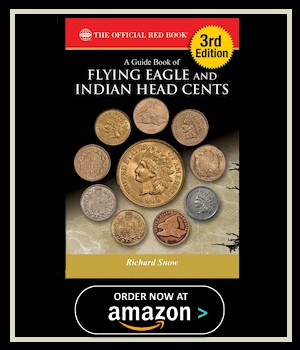
United States Cents
Early American coins, including one-cent, two-cent, three-cent, and large varieties, shaped the nation’s currency. For example, each denomination reflects unique economic and historical moments, from colonial trade to Civil War innovations.
The Large Cent: America’s First Coin
Design and Purpose
From 1793 to 1857, the large cent, crafted from pure copper, matched the size of a modern half dollar. Its bulk suited early trade but grew impractical. Consequently, production stopped as smaller denominations gained favor.
Legacy of Early Coinage
Featuring designs like the Flowing Hair and Classic Head, these pieces remain collector favorites. Their size and historical context offer insights into America’s early economy.
Evolution of the One-Cent Coin
Flying Eagle and Indian Head Designs
In 1857, the Flying Eagle design introduced a smaller, copper-nickel coin. By 1859, the Indian Head version followed, lasting until 1909. These designs balanced affordability and durability, meeting economic needs.
The Lincoln Coin’s Lasting Impact
Launched in 1909, the Lincoln penny became iconic. For instance, its wheat stalk reverse (1909–1958) and later Memorial design reflect America’s evolving identity. Collectors prize early editions for their historical value.
The Two-Cent Piece: A Civil War Innovation
Origin and Motto
Minted from 1864 to 1873, the two-cent piece debuted “In God We Trust” during the Civil War. However, limited demand ended its production. Today, its rarity draws collectors.
The Three-Cent Coin: A Postage Solution
Silver and Nickel Variants
The three-cent piece, in silver (1851–1873) and nickel (1865–1889), eased postage stamp purchases. As rates changed, its use faded. Nevertheless, these pieces remain notable for their role in commerce.
Collector Interest
Both silver and nickel three-cent coins attract enthusiasts. Their unique compositions and short minting periods make them prized relics of 19th-century America.
Preserving and Collecting Early U.S. Coins
Conservation Techniques
Experts suggest acid-free holders and controlled humidity to protect these artifacts. Proper storage ensures their condition, enhancing value for collectors and historians.
Authenticity and Grading
Services like NGC and PCGS grade early coins, verifying authenticity and condition. Certified pieces, especially rare large or early Lincoln pennies, often fetch higher prices due to collector trust.
Early American coinage, from large cents to three-cent pieces, tells stories of economic growth and cultural shifts. Whether from pioneering designs, Civil War-era innovations, or enduring pennies, these artifacts connect us to history. Thus, collectors and historians cherish them as tangible links to the past, ready to inspire new generations.
🟤 Large Cent (1793–1857)
Before the small cent we know today, the U.S. minted Large Cents, which were roughly the size of a modern half dollar.
-
Metal: Pure copper
-
Key Types:
-
Flowing Hair (1793)
-
Liberty Cap (1793–1796)
-
Draped Bust (1796–1807)
-
Classic Head (1808–1814)
-
Matron Head & Braided Hair (1816–1857)
-
-
Why it ended: Too bulky and expensive to make. Replaced by the smaller Flying Eagle cent in 1856–1857.
🟠 One-Cent Coin (1856–Present)
The modern penny began as a copper-nickel coin and has gone through several designs.
-
Key Types:
-
Flying Eagle (1856–1858) – short-lived design
-
Indian Head (1859–1909) – iconic and beloved by collectors
-
Lincoln Wheat (1909–1958) – commemorated Lincoln’s 100th birthday
-
Lincoln Memorial (1959–2008)
-
Lincoln Bicentennial (2009) – 4 reverse designs
-
Lincoln Union Shield (2010–present)
-
-
Metal Composition: Mostly copper until 1982; after that, zinc with copper plating
🟥 Two-Cent Piece (1864–1873)
Created during the Civil War when coin hoarding caused a shortage of small change.
-
Metal: Bronze
-
Unique Trait: First U.S. coin to bear the motto “In God We Trust.”
-
Obverse: Shield design
-
Why it ended: Falling demand and increasing preference for base-metal coins
🟦 Three-Cent Coin (1851–1889)
Made in two distinct types: silver and nickel.
-
🪙 Silver “Trime” (1851–1873)
-
Created to facilitate purchase of postage stamps
-
Tiny and thin—prone to being lost
-
-
🪙 Nickel Three-Cent (1865–1889)
-
Introduced post-Civil War
-
Slightly thicker and more durable
-
-
Why it ended: Postage rates changed and the coin became obsolete
🧠 Fun Fact:
-
All four coins reflect major economic or social shifts in U.S. history — from coin shortages to the expansion of the postal system and commemorative designs.






 '
'